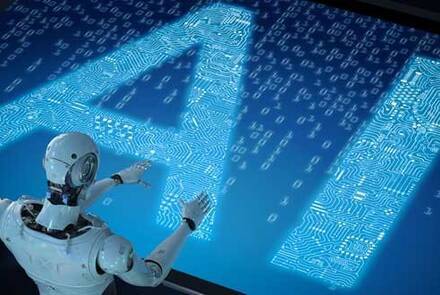What is a Smart City?
In a time marked by rapid technological growth and increasing urbanization, the idea of a "smart city" stands out as a symbol of innovation and efficiency. But what does a smart city really mean, and what benefits come with transforming our urban landscapes into these intelligent, interconnected ecosystems? Let’s explore the core of this concept and the many advantages it brings to our lives.
The Definition of a Smart City
A smart city uses technology, data, and innovative solutions to enhance the quality of life for its residents, improve sustainability, and optimize urban operations and services. At its core, a smart city integrates information and communication technologies (ICT) into its infrastructure and services, creating a seamless, interconnected network that allows for real-time monitoring, management, and optimization.
Key Components of a Smart City
Internet of Things (IoT): The IoT refers to the network of physical devices embedded with sensors, software, and other technologies to connect and exchange data with other devices and systems over the internet. Two key components of IoT solutions include:
- Sensors and Actuators: These devices collect data from the environment (e.g., temperature, air quality, traffic flow) and perform actions based on the data received (e.g., adjusting street lighting, managing traffic signals).
- Data Transmission: IoT devices transmit the collected data to central systems for analysis via wireless networks, including Wi-Fi, cellular, and low-power wide-area networks (LPWANs).
- Data Analytics: Data analytics involves processing and analyzing large volumes of data to uncover patterns, trends, and insights that inform decision-making. IoT data analytics is made up of three major steps:
- Data Collection: IoT devices and other sources continuously generate and transmit data.
- Data Processing: Advanced algorithms and machine learning models analyze the data to identify patterns and predict outcomes.
- Visualization and Reporting: The results are presented through dashboards and reports, providing actionable insights for city planners and administrators.
- Connectivity: Connectivity refers to the communication networks that enable the seamless flow of data between IoT devices, systems, and applications. IoT connectivity solutions can include:
- High-Speed Internet: Fiber-optic networks and 5G technology provide the bandwidth needed for real-time data transmission.
- Wireless Networks: Wi-Fi and cellular networks ensure devices can communicate without physical connections.
- Edge Computing: This approach processes data close to where it is generated (at the network edge) to reduce latency and improve response times.
- Automation: Automation involves using technology to perform tasks with minimal human intervention, enhancing efficiency and accuracy. Automation can take various forms in IoT solutions:
- Robotic Process Automation (RPA): Software robots perform repetitive tasks (e.g., data entry, monitoring).
- Artificial Intelligence (AI): AI systems make decisions and perform actions based on data analysis (e.g., adjusting traffic signals based on real-time traffic flow).
- Autonomous Systems: Machines and vehicles operate independently or semi-independently (e.g., drones for surveillance, autonomous buses).
Benefits of a Smart City
- Enhanced Quality of Life: Smart cities aim to create an environment where residents can enjoy a higher quality of life. This includes better access to public services, reduced commute times, improved healthcare, and enhanced safety. For instance, smart traffic management systems can alleviate congestion, leading to shorter travel times and reduced air pollution.
- Improved Public Safety: With the integration of IoT devices and real-time data analytics, smart cities can enhance public safety. Surveillance cameras, sensors, and emergency response systems can work together to detect and respond to incidents more efficiently. Predictive analytics can also help in anticipating and preventing crimes.
- Sustainability and Environmental Impact: Smart cities prioritize sustainability by implementing green technologies and practices. This includes efficient waste management systems, smart grids for energy distribution, and water conservation initiatives. By monitoring environmental parameters, cities can take proactive measures to reduce pollution and manage natural resources more effectively.
- Economic Growth and Innovation: The technological backbone of smart cities fosters economic growth and innovation. By providing a conducive environment for startups and tech companies, smart cities can attract investments and create job opportunities. Moreover, the data generated by smart city technologies can be used to develop new products and services, driving further innovation.
- Efficient Public Services: Automation and data analytics can significantly enhance the efficiency of public services. Smart utilities, for instance, can optimize water and electricity distribution, reducing wastage and costs. E-governance platforms can streamline administrative processes, making it easier for residents to access government services and information.
- Enhanced Mobility: Smart transportation systems, including intelligent public transit, bike-sharing programs, and autonomous vehicles, can transform urban mobility. By providing real-time information and optimizing routes, these systems can reduce travel times, lower emissions, and improve the overall commuting experience.
- Citizen Engagement: Smart cities empower residents by involving them in the decision-making process. Through digital platforms and mobile applications, citizens can provide feedback, report issues, and stay informed about city initiatives. This increased level of engagement fosters a sense of community and encourages collaborative problem-solving.
Conclusion
As urbanization continues to rise, the transition to smart cities offers a promising solution to the challenges faced by modern urban environments. By harnessing the power of technology and data, smart cities can create more livable, sustainable, and efficient spaces for their residents. The journey towards smart cities is not just about adopting new technologies; it is about reimagining the way we live, work, and interact with our urban surroundings.
For more information about Trigyn's Smart City & IoT services, Contact Us.






